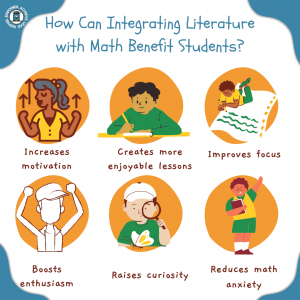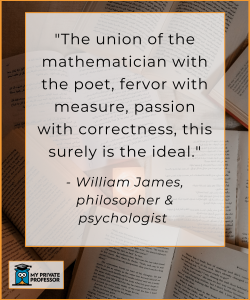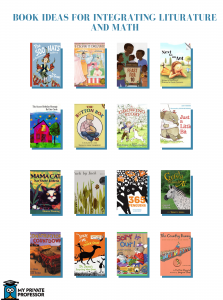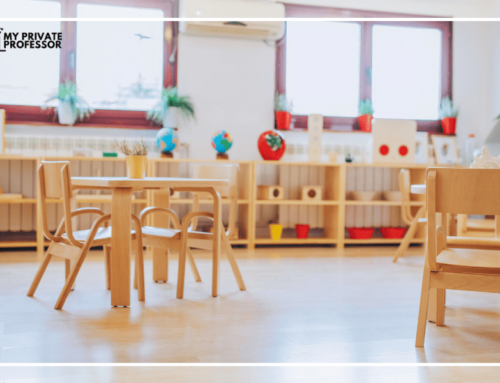You might be thinking, math and literature? Together?
As educational spaces continue to evolve, it’s crucial to nurture areas where students need support. And an overarching belief is that one of these major areas is math.
Frequently, when it comes to math, students face difficulties understanding such abstract concepts. As a result, teachers may need to come up with alternative options to implement when teaching math—strategies which may be more effective than traditional methods. One such approach is including literature within a math course.
And yes—it can be very effective!
Why is math difficult for students?
So why, exactly, is math so difficult? While students face difficulties in other subjects, let’s be honest—more often than not, it’s math that leaves students in tears.
Research has noted that mathematics may be inherently difficult due to its cumulative nature. That is, with math, you’re constantly piling new concepts and information on top of old material, and using all of it together.
If students don’t have firm understandings of concepts they’re expected to already have, they may have difficulties learning new materials and progressing.
Another reason why students have difficulties with math is that they hold high expectations about its difficulty. In addition, students often have low personal values attached to the subject. And the result is that they will be more likely to avoid math.
When students expect math to be extremely difficult and also don’t have a high personal stake in the topic, they are less likely to perform well. This is a reciprocal relationship, where students’ attitudes directly affect their performance and achievements (and in many cases, vice versa).
Marzano’s Dimensions of Learning Model posits that students must hold good attitudes around materials before true learning occurs. So once a student has a positive attitude around math, they can more successfully absorb and retain information.
And once they understand the concepts, they’ll more likely have higher confidence in their abilities.
Another issue: math anxiety
Math anxiety takes it to a whole new level, and is more than just struggling with math. Math anxiety refers to the feelings of fear and hopelessness around mathematical tasks and concepts. And the result?
Math anxiety is largely associated with poor mathematical knowledge and low grades. On top of this, students who experience math anxiety often lack confidence to achieve their goals in math, and have negative attitudes toward the subject. Accordingly, having low confidence may exacerbate the negative attitude around math, and vice versa.
A solution: alternative teaching strategies
Teachers and educators continue to recognize that teaching is not a one-size-fits-all space—there are always alternative teaching methods we can implement when one or another doesn’t work.
Given the frequency at which students face challenges, this is particularly applicable to mathematics.
The theory of multiple intelligences
Psychologist Howard Gardner introduced the Theory of Multiple Intelligences, which proposes that intelligence doesn’t exist in a single capacity. That is, there are multiple intelligences people hold—musical, rhythmic, visual, spatial, verbal, linguistic, logical, mathematical, interpersonal, intrapersonal, naturalistic, etc.
When educators craft lessons through this lens of thinking, they can more effectively yield engagement and retention since they’ll be teaching in a more inclusive manner.
In a few words, this means that educators should teach math using integrated approaches, which translates to lessons reflecting integrated intelligences. And one way to do this is by combining mathematics with literature.
An integrated curriculum: math & literature
Implementing an integrated curriculum allows educators to expand their main focus. Instead of strictly focusing on memorizing certain equations and formulas, teachers can include picture books, which is often a more effective method for some students. 
Using an integrated curriculum, teachers can provide students with more relevant contexts from which they can grasp math concepts. For students who are more prone to engaging with literature, they will be both more engaged and motivated to participate.
In fact, research has shown that connecting children’s literature with math can help students explain their reasoning. In addition, integrating literature can boost student enjoyment and inspire persistence around difficult tasks.
One study that investigated the effects of combining elementary math with literature found that students’ feelings around learning math were more positive when lessons involved story-telling. In addition, the researchers reported that students were better able to connect ideas when math lessons included literature.
How does literature enhance math comprehension?
For a while now, researchers have found that literature can enhance students’ understanding of certain mathematical concepts. William James, a psychologist and philosopher, is well known for saying that combining the mathematician and poet makes for an ideal unification.
Literature offers prior context
As noted, with math, you need prior context to build strong comprehension and connections between mathematical topics.
According to Faith Wallace, co-author of Teaching Math Through Reading, implementing literature in the classroom can help students build context and background knowledge. When math is brought up in the concept of a digestible story, students—particularly those who struggle with math—can learn those complex concepts in a more natural way.
That is, when they can think about math in more realistic, tangible contexts, students who struggle with math will be more capable of comprehending what previously seemed like abstract concepts.
Literature provides a more enjoyable experience
For children who don’t effectively learn mathematical concepts in traditional ways, combining literature with math classroom may simply be more enjoyable.
According to research, when children can connect over books they’ve read, they’re motivated to read more. This means that these children will be more inclined to engage in a math lesson which involves literature.
Children who enjoy reading will be more likely to have a positive attitude toward learning mathematical concepts and show more engagement when teachers use instruments that they are drawn to: in this case, books.
Integrating literature in the classroom reduces math anxiety
When students have math anxiety, their negative feelings tend to push them away from being receptive to really learning math in those traditional ways.
On the flip-side, integrating literature into math can reduce math anxiety—specifically through the way that teachers can relate math to the real world and teach it in a way to which students will more deeply relate.
A 2015 paper on the effect of using children’s literature to reduce elementary math anxiety concluded that integrating literature with math reduces student math anxiety, and in turn, improves their confidence.
Bringing in literature increases motivation & confidence around math
As we know, students are more capable of absorbing and retaining information when they’re motivated.
For students who don’t feel excitement for math, introducing children’s books into math is a potential motivator—and essentially helps them grasp mathematical concepts. 
The result: higher engagement
So when you combine a classroom full of students who lack the motivation and personal value surrounding math, you get a lack of learning.
But when you integrate literature with your mathematical lessons, you may reap personal reflection, inquisition, student engagement—and learning!
Tips for educators integrating literature into math class
One general way for educators to combine literature with mathematics is by creating math problems based on certain stories (picture books).
For instance, if you’re reading a book about children who take the school bus everyday, you can design word problems around hypotheticals where certain students don’t take the bus, and the goal is to determine the bus ride duration or how long it may take to get from point A to point B.
Above is one specific example, but the options are endless when it comes to making up simple arithmetic or more complex math problems using a picture book as inspiration. The picture books don’t need to be directly related to math—with any given story, you can almost certainly break down parts of the story and relate them to mathematical concepts.
And you can go outside of the box, too! Try using poetry, such as Shel Silverstien’s poem, Smart, to teach units related to money.
My Private Professor offers top notch tutors who can aid students in nearly every mathematical topic. Plus, they’re open to your unique learning style! If you think learning math through literature may be a fit for you, book a tutoring session today.
Author: Lydia Schapiro







